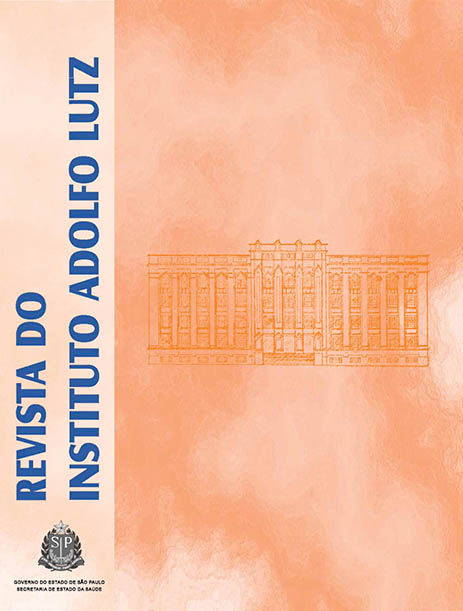Abstract
Food irradiation is used as an alternative procedure for preserving food, and to increase the food safety. Thirty-six samples of frozen vacuum-packed cuts of leg with bone (at -18 °C), from six Santa Inês lambs slaughtered in a slaughterhouse under state inspection, were used in this experiment. These samples divided into there groups, being 12 control samples, 12 samples irradiated with 3 kGy and 12 with 5 kGy. The samples were maintained refrigerated at 0 to 2 °C. The pH measurement, psychrotrophic heterotrophic aerobic bacteria plate counting and enumeration of Enterococcus spp. were carried out at day one, 15 days and 30 days of storage. The treatment and the storage period were included for statistical evaluation. The psychrotrophic counts and the enumeration of Enterococcus spp. showed higher values in control samples, although still in appropriate conditions for consumption. The range of pH values was within the established consumption limits. Irradiation was efficient, and this procedure promoted meat safety and minimized the bacterial growth. The radiation effect was not dose-dependent, therefore, the exposure to gamma radiation at 3 kGy dose would be the most suitable for minimizing the sensorial alterations of the product.References
1. Bressan MC, Prado OV, Perez JRO, Lemos ALSC, Bonagurio S. Efeito do peso ao abate de cordeiros Santa Inês e Bergamácia sobre as características físico-químicas da carne. Cienc Tecnol Aliment. 2001;21(3):293-303.
2. Brasil. Ministério da Sáude. Resolução RDC nº 21, de 26 de janeiro de 2001. Aprova o Regulamento Técnico para Irradiação de Alimentos. Diário Oficial [da] República Federativa do Brasil. Brasil, Brasília, DF, 29 de janeiro de 2001, Seção 1, nº 20-E, p. 35.
3. Cheng A, Wan F, Xu T, Du F, Wang W, Zhu Q. Use of irradiation for microbial decontamination of meat: situation and perspectives. Radiat Phys Chem. 2011;80(3):475-80.
4. Franco BDGM, Landgraf M. Microbiologia de Alimentos. São Paulo (SP): Livraria Atheneu; 2001.
5. Domig KJ, Mayer HJ, Kneifel W. Methods used for the isolation, enumeration, characterization and identification of Enterococcusspp. sp 1. Media for isolation and enumeration. Int J Food Microbiol. 2003;88:147-64.
6. Khan SA, Nawaz MS, Khan AA, Hopper SL, Jones RA, Cerniglia CE. Molecular characterization of multidrug-resistant Enterococcus spp. from poultry and dairy farms: detection of virulence and vancomycin resistance gene markers by PCR. Mol Cell Probes. 2005;19:27-34.
7. Miyaguscu L, Chen F, Leitão MFF, Baffa O. Avaliação sensorial da vida útil de cortes de peito de frango irradiados. Ciênc Tecnol Aliment. 2003;23:7-16.
8. Chawla SP, Paul P, Thomas P, Babu Y, Sastry MD. Detection of irradiated lamb meat with bone: effect of chilled storage and cooking on ESR signal strength. Int J Food Sci Technol. 1999;34(1):41-5.
9. APHA. American Public Health Association. Compendium of Methods for the Microbiological Examination of Foods. 4 ed. Washington-DC: APHA; 2001. pp. 63-7, 159-65.
10. Merck. Microbiology Manual. 12a ed. Berlim; 2005.
11. Brasil. Ministério da Agricultura, Pecuária e Abastecimento. Secretaria Nacional de Defesa Agropecuária. Regulamento da Inspeção Industrial e Sanitária de Produtos de Origem Animal (aprovado pelo decreto nº 30.691, de 29 de março de 1952, alterado pelos decretos nº 1.255, de 25 de junho de 1962, nº 1.236, de 02 de setembro de 1994, nº 1.812, de 8 de fevereiro 1996, nº 2.244, de 5 de junho de 1997, e nº 6.385, de 27 de fevereiro de 2008). DIPOA-MAPA, Brasília, DF, 2008.
12. Sas Institute. SAS User’s guide statistics. Cary, 1999.
13. Nortjé K, Buys EM, Minnaar A. Use of γ-irradiation to reduce high levels of Staphylococcus aureus on casey-whein protein coated moist beef biltong. Food Microbiol. 2006;23(8):729-37.
14. Valente AM. Efeito da irradiação sobre mexilhões [Perna perna(Linaeus, 1758)]: coliformes termotolerantes e Enterococcus; ação antimicrobiana e análise sensorial das amostras [dissertação de mestrado]. Niterói (RJ): Universidade Federal Fluminense; 2004.
15. Millar SJ, Moss BW, Stevenson MH. The effect of ionizing radiation on the colour of beef, pork and lamb. Meat Sci. 2000;55(3):349-60.

This work is licensed under a Creative Commons Attribution 4.0 International License.
Copyright (c) 2012 Instituto Adolfo Lutz Journal
